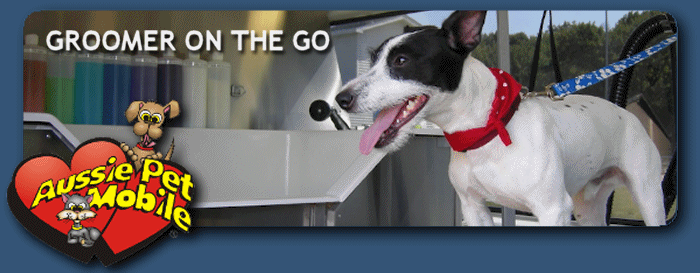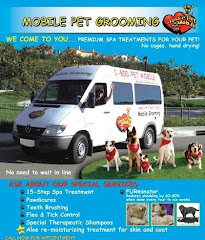
We all dread the encounter between our dog and a skunk. With warmer weather here, skunks are out and about and your dog is more likely to find one. If it does, it’s likely to be the victim of the skunk’s defense mechanism, the ability to spray a foul smelling scent up to 15 feet.
You can minimize the chance of coming across a skunk by keeping your dog on a leash, never keeping food outside, keeping your property clean, and turning on an outside light when going out after dark.
Skunks are common in North America, especially in rural areas, and sometimes wander into suburban back yards. Normally peaceful and slow moving animals, skunks have developed their scent glands to provide a highly effective weapon against potential enemies.
If your dog gets skunked, he not only will carry the smell on him, but will get it on anything else he touches, like your carpet or your couch. It is important to treat the dog right away and keep it confined and out of the house.
Your first thought might be to hose off the dog, but water can actually make it worse. Call your groomer and see if you can get a quick appointment for the dog. Groomers have anti-skunk treatments that will help. This is where a mobile groomer is far better than a store; you don’t have to get the skunked dog in your car! If you are forced to treat the dog yourself, the best treatment is a homemade mix of hydrogen peroxide, baking soda, and Dawn dish soap. Don’t try tomato juice unless you want the dog turning pink. Mix 1 quart of the peroxide, ¼ cup of the baking soda, and about 2 tablespoons of the Dawn. Use the mixture right away, and pour it over a dry dog. Cover the dogs eyes and keep the mixture off his head. Let it soak in for about 10 minutes, then you can rinse with water. You’ll probably need to repeat this many times. Even after you treat the dog, it’s still a good idea to get him to the groomers as soon as you can. Their products will take out even more of the smell and replace it with a good smell and a clean coat.
Even treated, you will probably be able to detect an odor for a week or more. The goal is to minimize the problem; only time will totally get rid of it. Also it goes without saying to make sure your dog’s vaccinations are up to date. Besides being smelly, skunks can carry rabies .
You can minimize the chance of coming across a skunk by keeping your dog on a leash, never keeping food outside, keeping your property clean, and turning on an outside light when going out after dark.
Skunks are common in North America, especially in rural areas, and sometimes wander into suburban back yards. Normally peaceful and slow moving animals, skunks have developed their scent glands to provide a highly effective weapon against potential enemies.
If your dog gets skunked, he not only will carry the smell on him, but will get it on anything else he touches, like your carpet or your couch. It is important to treat the dog right away and keep it confined and out of the house.
Your first thought might be to hose off the dog, but water can actually make it worse. Call your groomer and see if you can get a quick appointment for the dog. Groomers have anti-skunk treatments that will help. This is where a mobile groomer is far better than a store; you don’t have to get the skunked dog in your car! If you are forced to treat the dog yourself, the best treatment is a homemade mix of hydrogen peroxide, baking soda, and Dawn dish soap. Don’t try tomato juice unless you want the dog turning pink. Mix 1 quart of the peroxide, ¼ cup of the baking soda, and about 2 tablespoons of the Dawn. Use the mixture right away, and pour it over a dry dog. Cover the dogs eyes and keep the mixture off his head. Let it soak in for about 10 minutes, then you can rinse with water. You’ll probably need to repeat this many times. Even after you treat the dog, it’s still a good idea to get him to the groomers as soon as you can. Their products will take out even more of the smell and replace it with a good smell and a clean coat.
Even treated, you will probably be able to detect an odor for a week or more. The goal is to minimize the problem; only time will totally get rid of it. Also it goes without saying to make sure your dog’s vaccinations are up to date. Besides being smelly, skunks can carry rabies .



